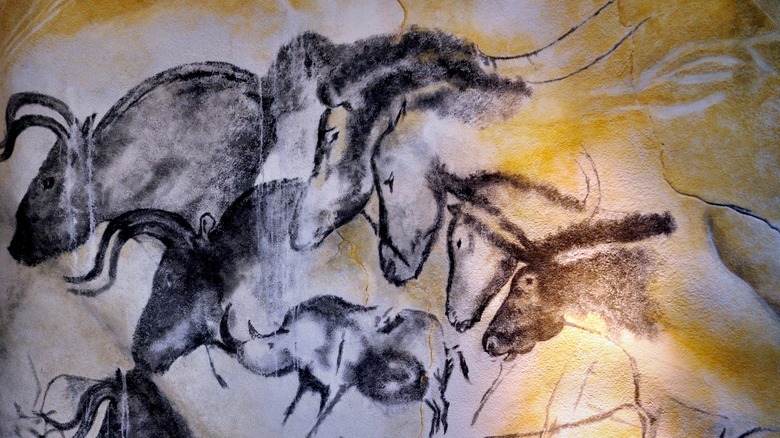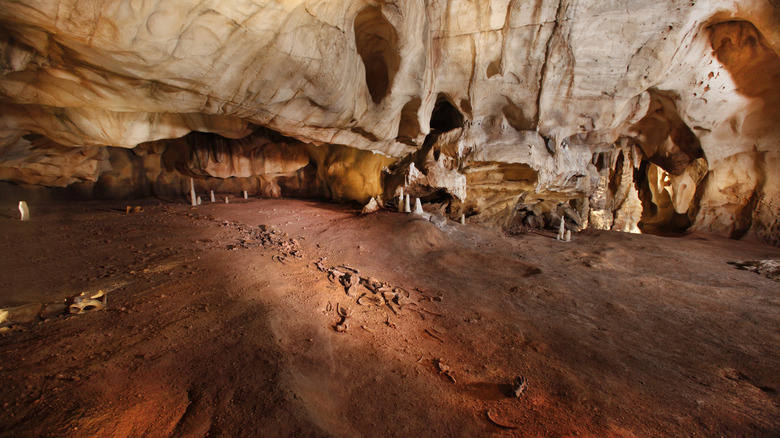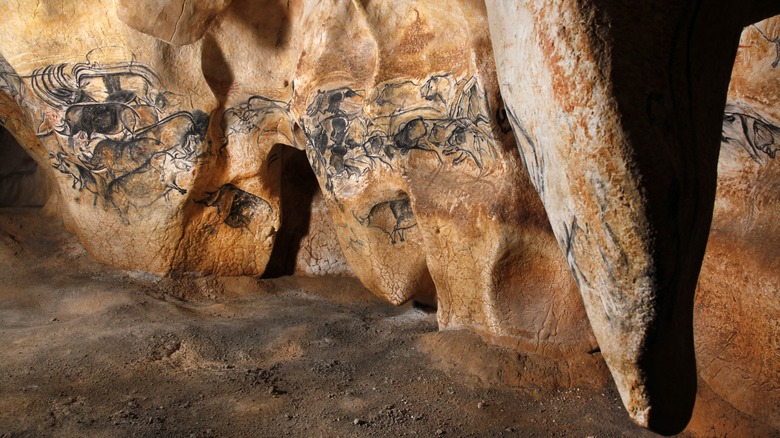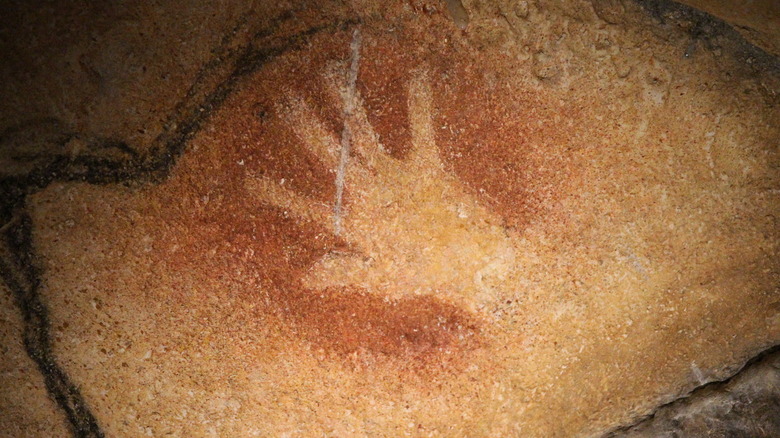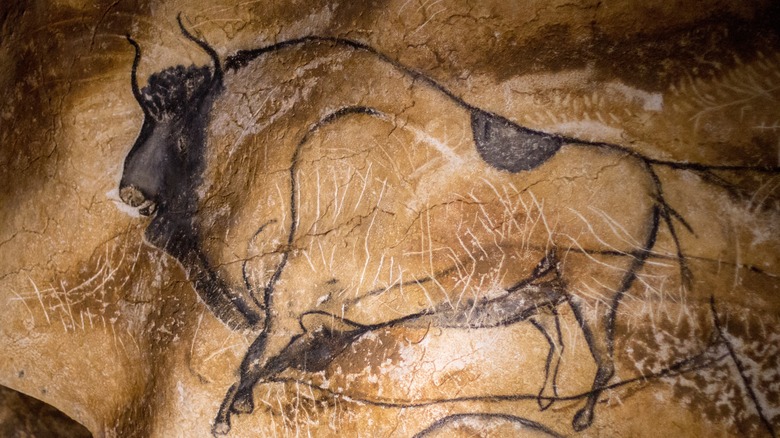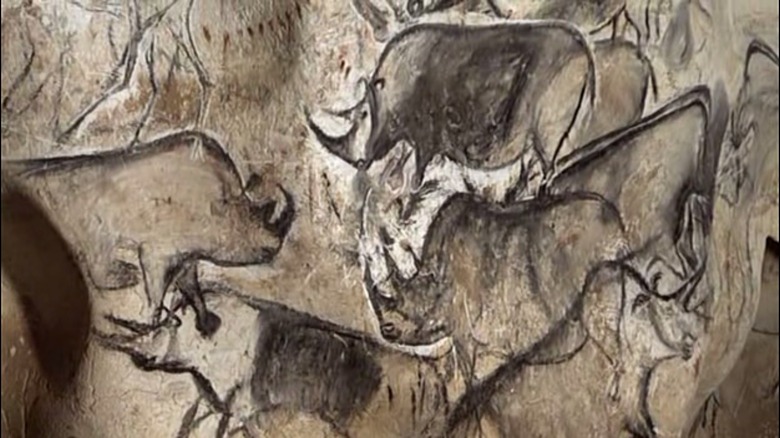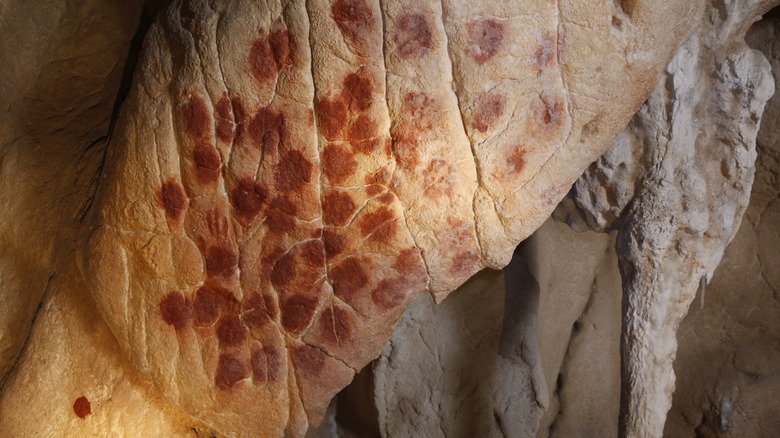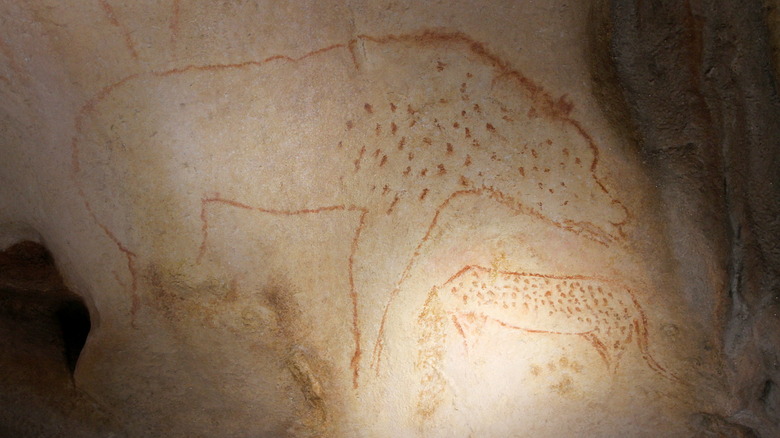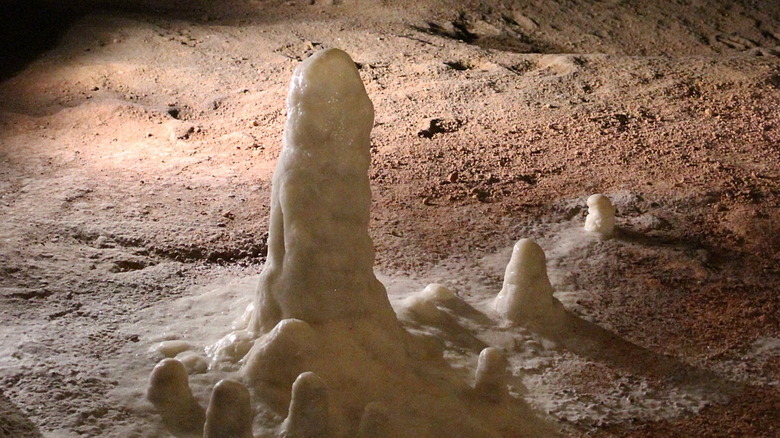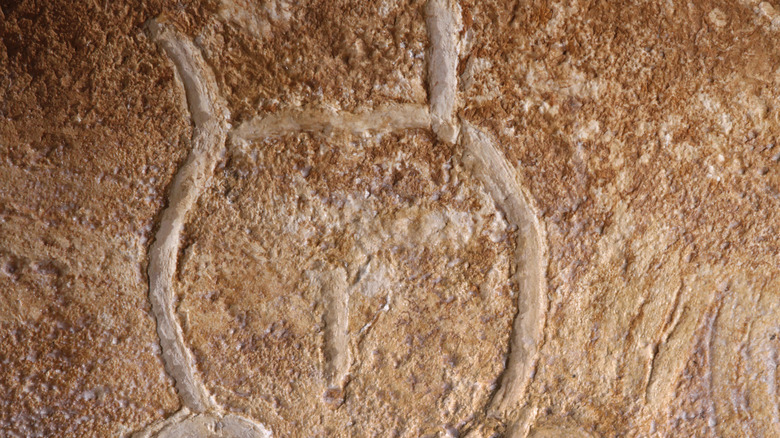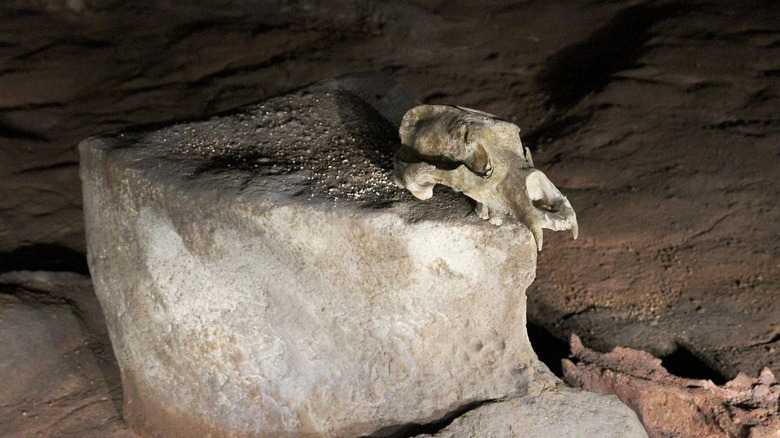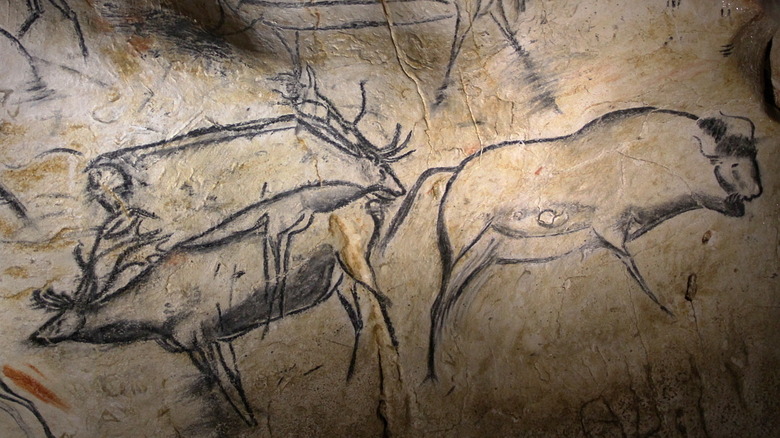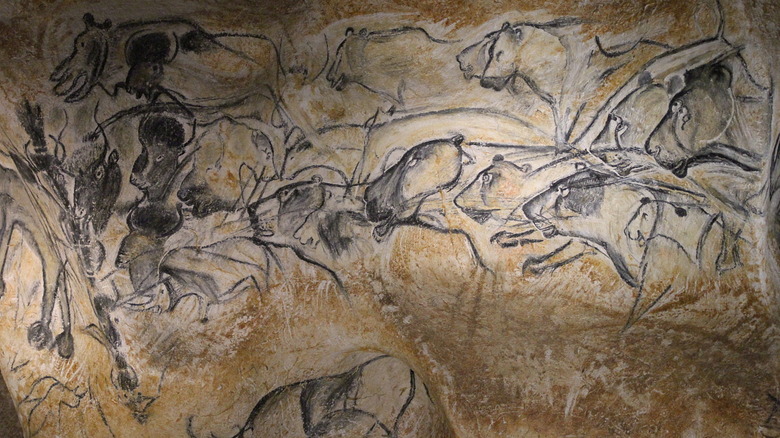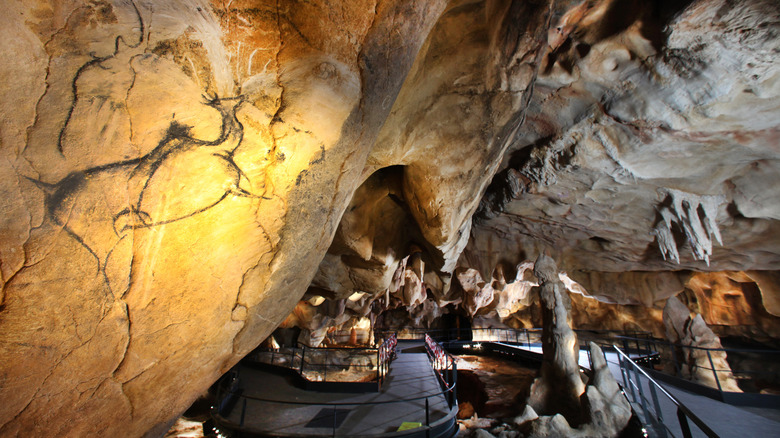The Mysteries Of Chauvet Cave
Chauvet Cave is perhaps the most fabulous location of prehistoric cave art in the world. This site, formally known as Grotte Chauvet-Pont d'Arc, is hidden within a limestone plateau of the Ardèche River in southern France. Several elements about Chauvet are so remarkable that it was designated as a UNESCO World Heritage site in 2014.
Chauvet Cave had been used in human activities from about 32,000 years ago until about 20,000 years ago, when a rockfall sealed the entrance. Neither humans nor animals could get in. Thus, it became a time capsule to the earliest memories of our ancestors.
Second is the quality of the art. There are about 1,000 categorized works of art at Chauvet. These mainly consist of animals and abstract symbols, but there are also evocative rare human appearances. All the art is of high quality and as intriguing to a viewer now as they were over 30 millennia ago.
The third point about Chauvet is that it was discovered so recently that it was not subject to the mismanagement, looting, and tourist issues that have destroyed or damaged other cave art sites, according to UNESCO. From the get-go, Chauvet, its art, and archaeology became a scientific project, a mystery of deep time begging to be solved. Yet it is unclear if Chauvet Cave will yield all its secrets. Let's take a deeper look and find out.
Chauvet Cave's discovery
December 18, 1994 saw cavers Jean-Marie Chauvet, Éliette Brunel, and Christian Hillaire exploring near the banks of the river Ardèche. The French Ministry of Culture, which maintains the official site for Chauvet cave, relates how as the three friends approached a cliff, they found a hole with a breeze coming out of it –- a sure sign of a cave. Digging in, they removed blockages until they found themselves accessing a dark void. They had come across an undiscovered cave system. Using spelunking ladders to descend, they began to carefully explore the network, even discovering animal bones. Then on their way out, Brunel saw a mammoth drawn in red upon a rock pendant.
It was an awe-inspiring discovery. The group of friends had found not only a large and beautiful cave system but that humans had been there before, evidenced by what turned out to be seemingly hundreds of works of rock art etched and painted on the stone. After they left, they were concerned about the future of the cave, knowing full well what happened at sites such as Lascaux, where the paintings had been damaged by the carbon dioxide emitted by an endless line of tourists. They covered their tracks and debated what to do.
Size and shape of the cave
The cave that Chauvet, Brunel, and Hillaire discovered was large. Britannica sets Chauvet's size at 91,493 square feet. In addition, the cave was very lofty, with one chamber even reaching 98 feet in height. A map of Chauvet Cave shows that it was no monolithic cavern but rather a complex network of different chambers that wind through the underworld. While there was no evidence of the cave being used as a permanent domicile for humans, it was certainly well used.
Aside from the human presence, the cave had evidence of being frequented by other animals, particularly the now extinct Ursus spelaeus, cave bears. There were 195 cave bear skulls littered on the floors of the cavern, thousands of bones, numerous scratch marks on the cavern walls, and footprints, according to Britannica. Apparently, the cave was a hibernation site for the bears before humans came to use it. Then a landslide sealed off the main entrance some 20,000 years ago.
Research
Chauvet Cave is one of the rare archaeological sites that, from its discovery, has been strictly protected. Britannica tells us that shortly after the discovery, the French government sent the archaeologist Jean Clottes to examine the site. He obtained samples for carbon dating and assessed the cave's value. Meanwhile, according to the French Ministry of Culture, within a year of its discovery, Chauvet was added to a list of historical monuments protected by law. Special access routes within the cave were established so that there was very limited tampering with the ground and materials in the cave. Then a special office was established, headed by a curator who had oversight of Chauvet. It was determined that the cave would not be opened to the public.
The first serious study of Chauvet began in 1998. Headed by Clottes, a scientific team began a meticulous study of Chauvet. In all cases, strict rules were applied in order to ensure the preservation of the site. Even today, Smithsonian tells us that those who are lucky enough to be allowed into the cave need to follow strict protocols. For example, visitors could not trample on the soft ground lest any trace of prehistory was damaged. It was in this way that Chauvet became one of the best protected and analyzed prehistoric sites in the world.
The humans who visited Chauvet
Humans of the Aurignacian culture first visited and used Chauvet over 37,000 years ago. This culture, according to the French Ministry of Culture, is one of the earliest modern human cultures associated with Europe. Ranging from Spain to Russia and the Near East, Aurignacians had a well-developed hunter-gatherer culture. They created tools, handcrafted ornamentation, portable art, and of course, cave art. These people, according to the World History Encyclopedia, mainly used the cave about 32,000 years ago, when most of the paintings seem to have been created. After that, there was sporadic use by the succeeding Gravettian culture. This culture left evidence of their coming into the cave based on the dating of charcoal, but they did not make the paintings. It may be that they simply came to look in wonder at what their ancestors had created.
In fact, the question of why humans came to Chauvet is a mystery. As the Bradshaw Foundation points out, it is impossible to understand the cave art at Chauvet because it is from a cultural experience that lasted for tens of thousands of years and is now extinct. Without a time machine, the truth will never be known, although researchers do offer lots of hypotheses.
How the art was created
The artists at Chauvet cave were so advanced in their techniques that they overrode old assumptions about the evolution of art. According to the Archives of General Psychology, the cave artists took meticulous care, including scraping the walls clean in preparation for painting, modeling, outlining figures, and using perspective. They also carefully chose what materials and tools to use based on the state of the wall so that they would either engrave, scrape, or use fingers to trace pigment. For painting, the artists would spray it using a tube or use a brush, finger, or piece of charcoal to apply it directly.
The World History Encyclopedia explains that one of the primary materials for the Chauvet cave artists was charcoal, which was produced by hearths within the cave itself. This was used for black line making. Red paint was made from hematite, an iron oxide compound. Thus, the two paint colors in Chauvet are black and red. However, white is also made available by engraving techniques upon the rock face itself.
The Brunel Chamber
The Brunel Chamber is where Chauvet and his companions first entered the cave system. According to "Painted Caves," this chamber is especially grand, having a nearly 100-foot high ceiling. It also features numerous blocks that in times past had fallen from the ceiling but were now cemented to the cave floor by natural processes such as calcification. According to the French Ministry of Culture, most of the art in the Brunel Chamber is composed of red ochre. Much of this is shaped like red dots, lines, and sprays. The significance of these dots is a mystery. Still, this does not prevent some from offering explanations. For example, artnet reports one theory is that a nearby volcano had erupted at about the time the paintings were created.
Aside from the red abstract art, there is also figurative art, all painted in red in the chamber, including a deer, bear, and an ibex. Speaking of ibex, there is also an alpine ibex skull sitting on the floor toward the back of the chamber. Did a person put it there, or did a predator drag it in for a meal? This is unknown.
The Chamber of the Bear Hollows
Connected to the Brunel Chamber is the Salle de Bauges, translated to Chamber of the Bear Hollows. Both this chamber and the Brunel Chamber were connected to the original entrance porch, so a person entering the cave during prehistoric times would have had access to both. According to the French Ministry of Culture, unlike the Brunel Chamber, this section of the cave has a smooth floor and multiple signs of humans and bears. As "Three Stones Make a Wall" points out, it is the presence of hibernating bears from aforetime that the chamber received its name. The giant bruins scraped out shallow hollows in the floor for themselves to use as nests.
In terms of art, the chamber has some located in its darker recesses, more inward toward the cave depths in what is called the Red Panels Gallery. This includes red hand stencil art on the walls as well as figurative art. One example is the Panther Panel which the Bradshaw Foundation informs us contains 10 animals that include two great cats, one a panther. These figures are all outlined in red, but the art seems somewhat incomplete for an unknown reason.
The Cactus Gallery
The Cactus Gallery is a dead-end in Chauvet Cave off of the Chamber of the Bear Hollows. The Cactus Gallery got its name not because prehistoric humans painted cacti on the stone walls, but because of a feature they would never have known. After the collapse of the cave entrance, calcite formed into large stalagmites on the floor, looking decidedly like underground saguaros. According to "Three Stones Make a Wall," this area was where Éliette Brunel first discovered the mammoth image upon the rock pendant and realized humans used the cave.
The French Ministry of Culture tells us that there are about 30 different images in the Cactus Gallery which include large cats, bears, and more mammoths. With the exception of the original mammoth, all the animals are drawn as if they are moving toward the original cave entrance. On the opposite wall are simple, abstract figures, usually composed of red dashes in groups of two or three.
The Hillaire Chamber
From the Chamber of the Bear Hollows, you can walk deeper into the cave system by passing through the Candle Gallery until you come to the vast Hillaire Chamber. "Three Stones Make a Wall" tells us that the chamber is about 100 feet wide with a roof of almost the same height. The Hillaire Chamber is a crossroads of sorts because multiple chambers deeper into the cave system branch off it. Still, the Hillaire Chamber is significant since it shows a transition in artistic style.
The World History Encyclopedia describes how at this point, the works of art become more elaborate, and the color shifts from red to mainly black. Engravings also become more numerous. One engraving that stands out is a long-eared owl which looks at the viewer with its head rotated 180 degrees as it might do in nature. These works of art tend to cluster around the southern end of the chamber. The French Ministry of Culture explains how there were remnants of charcoal, branches, blocks, and flint. In addition, there are also a considerable number of cave bear bones found within this chamber.
The Skull Chamber
Connected to the western end of the Hillaire Chamber is the Skull Chamber. The French Ministry of Culture describes the chamber as a natural type of amphitheater where the bottom of the chamber is mainly flat and low. This region had been prone to flooding in the past based on the numerous bear tracks made in what was mud as well as evidence of erosion on the lower parts of the walls. The chamber also contains numerous engravings and paintings of fauna. One of the most well-known cave art paintings is found at the entrance to this chamber. The Horses Panel depicts horses and rhinoceroses with stunning naturalism.
Yet what makes the Skull Chamber most mysterious is why the chamber got its name. In the middle of the floor, on a block that fell from the ceiling, is a cave bear skull that appears to have been purposefully placed on its edge. Archaeology maintains that there is also a trace vestige that a fire was burned in front of it. In addition to this, nearly 200 other bear skulls have been found in this chamber. All this is evidence for the assertion that the Skull Chamber may have been a place of ritual. Perhaps the skull was the centerpiece of a prehistoric altar. Still, the truth will never be known. As pointed out in "The Archaeology of Childhood," the skulls could also have easily been a child just playing around in the cave.
The Megaloceros Gallery
Heading north off of the Hillaire Chamber, you pass into the Megaloceros Gallery. This is a fairly narrow passage that is purposefully decorated with numerous works of art. "Three Stones Make a Wall" tells us that this chamber got its name from a painting of megaloceros, an extinct species of giant deer. The gallery also contains other works of faunal art, including rhinoceros and ibex paintings.
The image of the megaloceros is the most curious since it partially covers spray-like shapes. According to Scientific American, this image has been used to hypothesize that it is a depiction of a volcano eruption in tandem with the red sprays of earlier galleries already discussed. This is plausible since now extinct volcanos in nearby Bas-Vivarais would have been visible from Chauvet, and the dating of the drawings is in the same time range. While it is impossible to prove if this hypothesis is correct, it is clear that the main purpose of the Megaloceros Gallery is to lead a person toward the End Chamber.
The End Chamber
At the deepest northern recess of Chauvet is the End Chamber which is filled with spectacular paintings. The World History Encyclopedia points out some of the highlights that include the Panel of the Rhinos, which contains lions, a reindeer, and 17 rhinoceroses. Another awesome panel, which is often ranked as one of the best works of prehistoric art, is the Panel of the Lions. This work shows a pride of 16 lions, revealed mainly by their heads hunting seven bison. Here the artists used the wall and a technique to create depth, perspective, and such realism that the figures seem to be alive.
The chamber also contains one of the most mysterious works dubbed the Venus Pendant, or by other organizations such as the Bradshaw Foundation, as the Venus and the Sorcerer. This charcoal painting consists of the lower half of a woman's body intertwined and associated with a man-bison. This image, located at the very rear of the chamber, must have had special significance for the people who drew it. Theories include how the female anatomy of the Venus, which corresponds to various figures and objects of the Aurignacian, has special significance for the Sorcerer, being the man-bison (via Bradshaw Foundation).
Visiting Chauvet
If you want to visit Chauvet, you can't, or at least most people can't. The Bradshaw Foundation compares the lockdown at Chauvet to Fort Knox. It is sealed with a steel door, and steel ramps are the only walkways you can take through the cave. More people have visited the top of Mount Everest than have descended into Chauvet. Smithsonian points out that this was all done to preserve the site and to prevent it from becoming like Lascaux, France's other famous cave art site, which had been heavily damaged by the public visiting and breathing out enough carbon dioxide that it permanently ruined the cave art. As a result, only a handful of people are allowed into the cave annually.
However, you can visit the $60 million faux Chauvet Cave built by the government to provide people with a prehistoric experience. This site, the Grotte Chauvet 2 Ardèche, was constructed between 2013 and 2015 with as much detail to the original as possible.
